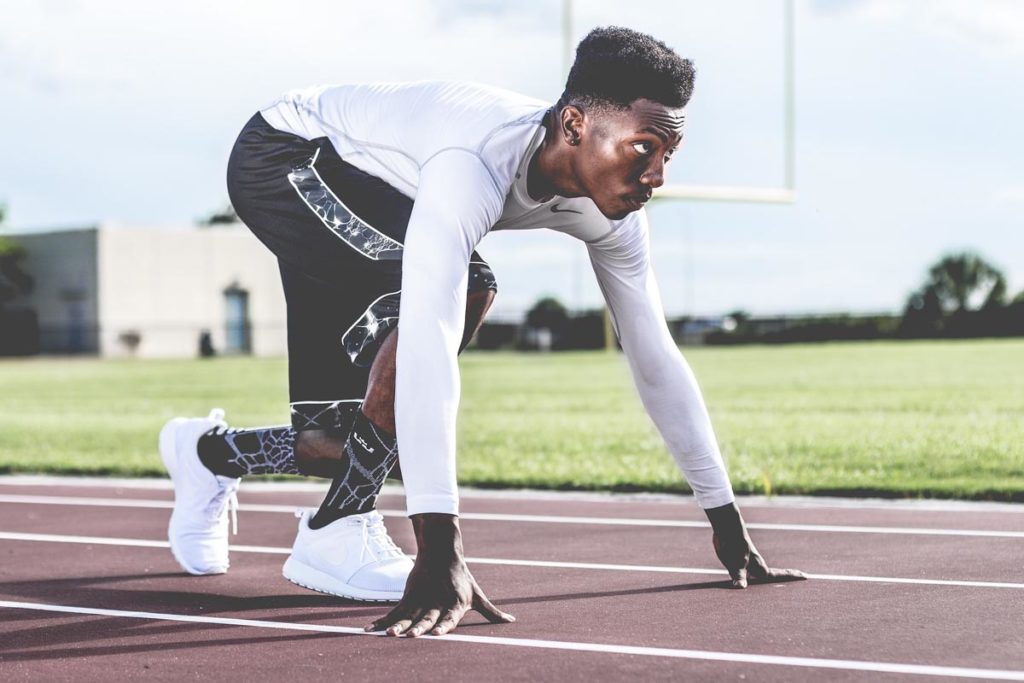Increase Neuromuscular Power for Your Athlete Clients
Help your clients deliver maximum neuromuscular power.

Competitive athletes often train for peak neuromuscular power to excel at the complex movements their sports require. Many personal training clients want to apply the same principle to their favorite sports.
With the right power training, fitness competitors can improve their tennis serve, golf swing, running speed, volleyball spike, soccer performance, basketball vertical jump and so on.
To help these clients, you need to understand the fundamentals of neuromuscular power development, and two papers from Cormie, McGuigan & Newton, both published in 2011, provide some excellent resources. You also need practical ideas for incorporating power training. This month’s column will help get you there.
What Is Peak Neuromuscular Power?
A quick refresher: Strength is the ability to move against resistance. Power is the ability to deploy strength in rapid-fire bursts.
The dynamic motions of sport require peak power—that is, the most strength a muscular contraction can muster in one of these quick bursts. Sporting athletes depend on peak power for jumping, running, throwing, striking, swinging and kicking. Scientists prefer the term “neuromuscular power” (to just “power” itself) because neural factors—including motor unit recruitment, muscle fiber firing frequency and synchronization of a muscle’s contractile forces—are involved.
Neuromuscular power can be affected by muscle fatigue, stretch reflexes, elastic components in muscle, muscle temperature, joint configuration, muscle fiber type, pennation (muscle fiber alignment to movements) and the type of muscle contraction (concentric, eccentric and isometric).
What Is the Strength and Power Relationship?
Cormie, McGuigan & Newton note that people need to be relatively strong before they can produce a lot of power. The researchers point to several studies indicating that stronger participants produced more power than weaker ones. The science says that getting stronger increases the diameter of muscle fibers and triggers physiological factors (within muscle) that boost intramuscular coordination for power production.
Thus, a major take-home for fitness pros is that before designing power-producing exercises or programs for a client, they must develop the client’s foundational strength.
What Is Movement Pattern Specificity?
To excel in sports, an athlete must produce power in dynamic, multijoint movements. The preferred method for achieving peak power depends on the nature of the movement pattern. As a trainer, your goal is to select exercises that strengthen muscles while following the movement patterns and ranges of motion required to play the competitive sport. Training programs that improve peak power include traditional resistance training, ballistic exercises, plyometrics and weightlifting, say Cormie and colleagues.
TRADITIONAL RESISTANCE TRAINING
Squats, bench presses and other traditional multijoint resistance exercises help enthusiasts develop the solid foundational strength they’ll need to improve their power. Cormie and colleagues explain that heavy–load training (ÔëÑ80% of one–repetition maximum) is a viable way to develop power largely because it recruits the bigger, type 2 (fast–twitch) muscle fibers, which are considered predominantly responsible for powerful athletic performance.
However, traditional resistance exercises decelerate in the latter phase of the movement. Given that power is about speeding up, not slowing down, resistance training alone isn’t enough to maximize peak power. Thus, fitness pros need to employ more mechanically specific training concepts, such as ballistic exercises, plyometrics and weightlifting.
BALLISTIC EXERCISES
Ballistic movements include jump squats and bench press throws (of an object such as a medicine ball). Ballistic movements encourage clients to accelerate a movement pattern throughout the entire range of motion to the point of takeoff or release of a thrown object. The movement has no deceleration phase.
You can progress ballistic exercises by increasing the load—for example, by using a heavier medicine ball for the bench press throw or wearing a weighted vest on the jump squat. Cormie, McGuigan & Newton note that studies have used a variety of loads, from 0% to 80% of l-RM, with a similar traditional resistance exercise. They note that force, power and muscle activation go higher during a ballistic movement because acceleration continues through the full range of motion.
Many researchers and coaches praise ballistic exercises for power development because the motions are generally more sport-specific than others, potentially providing adaptations that translate into better sporting performance. Ballistic exercises effectively increase peak power output in sport-specific movements and improve power production via a variety of loads, say Cormie and colleagues.
PLYOMETRIC EXERCISES
Plyometric exercises are ballistic movements that use little to no external resistance beyond body weight. Plyometrics also focus on the initial active stretch, which includes eccentric contraction of a muscle followed by rapid, shortening concentric contraction of the same muscle.
Plyometric exercises emphasize the initial prestretch in movements such as jumping, hopping, jumping rope, skipping, bounding, lunging, and doing jump squats or clap pushups.
For additional information, exercises and research citations, see “Peak Neuromuscular Power for Your Athlete Clients” from the March 2019 print edition of Fitness Journal. If you cannot access the full article and would like to, please contact the IDEA Inspired Service Team at 800-999-4332, ext. 7.
Photo credit: Ryderwear https://www.ryderwear.com/collections/womens-leggings/
Len Kravitz, PhD
Len Kravitz, PhD is a professor and program coordinator of exercise science at the University of New Mexico where he recently received the Presidential Award of Distinction and the Outstanding Teacher of the Year award. In addition to being a 2016 inductee into the National Fitness Hall of Fame, Dr. Kravitz was awarded the Fitness Educator of the Year by the American Council on Exercise. Just recently, ACSM honored him with writing the 'Paper of the Year' for the ACSM Health and Fitness Journal.






